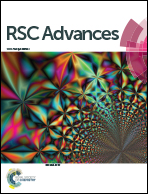Phenolic profiles and antioxidant activity in four tissue fractions of whole brown rice
Abstract
In view of the fact that different types of processed rice contain different tissue fractions, the present study quantified free and bound phenolic profiles and antioxidant activity in the pericarp, aleurone layer, embryo and endosperm fractions of japonica and indica whole brown rice. Significant differences were found in the total phenolic content, oxygen radical absorbance capacity (ORAC) and cellular antioxidant activity (CAA) of the different fractions. The ratios of free and bound phenolics to total phenolics varied between the fractions. Thirteen individual phenolic compounds (gallic, protocatechuic, hydroxybenzoic, chlorogenic, vanillic, caffeic, syringic, isoferulic, coumaric and ferulic acids, as well as catechin, epicatechin and quercetin) were detected in both free and bound forms. The contributions of the pericarp, aleurone layer and embryo fractions to whole brown rice were 13.0%, 28.5% and 8.8% for total phenolics, 14.1%, 29.7% and 9.1% for total flavonoids, 18.2%, 38.0%, and 11.1% for total ORAC values and 14.6%, 38.0%, and 16.9% for CAA values, respectively. These findings indicate that the phenolics in brown rice can be concentrated by processing different fractions or by milling to different levels because of the uneven distribution of chemical constituents.


 Please wait while we load your content...
Please wait while we load your content...